Google Trends is a free tool that analyzes global search behavior based on Google Search data. It helps you track rising interest in keywords, compare regional demand, and identify market opportunities. Whether you're exploring product categories orvalidating launch timing, Google Trends gives you a clear picture of real-time consumer intent. Visit the tool: https://trends.google.com .
Understand search trends
Google Trends tracks relative interest over time using a scale from 0 to 100. A score of 100 represents peak popularity for a given keyword during the selected time period.
Use this data to:
- Track rising or declining interest in products.
- Identify seasonal cycles.
- Filter by country, time range, search type, and category.
Example:
Search interest for Christmas lights spikes in October every year. In contrast, ski equipment drops during the summer months. These are clear signs of seasonal demand.
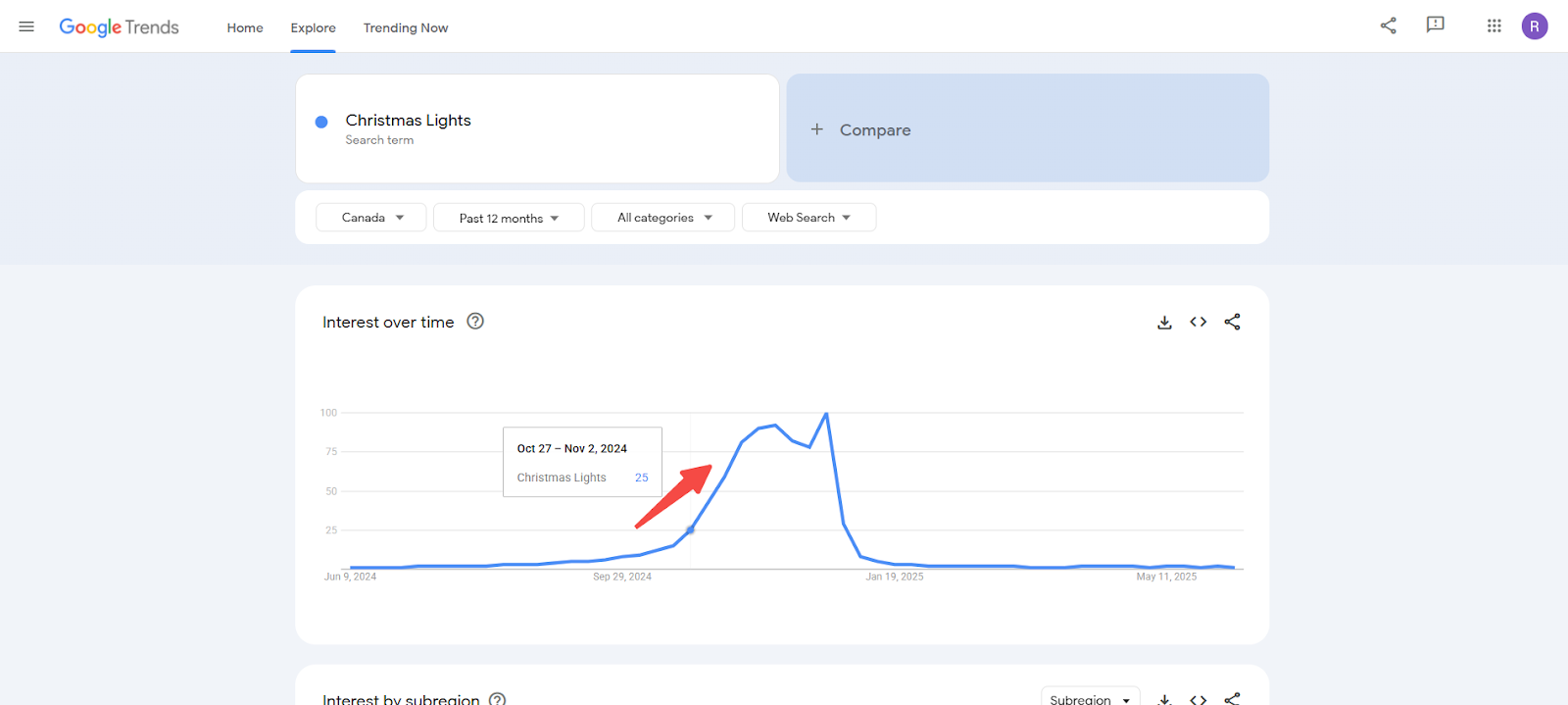

Compare keywords and regions
Google Trends lets you compare multiple keywords or regions to evaluate:
- Competitive intensity.
- Market saturation.
- Region-specific consumer behavior.
Use this to:
- Locate high-potential markets.
- Avoid launching in regions with low interest.
- Tailor product messaging by region.
Example 1: Ski wear shows high seasonal demand in the US from October to March. In contrast, interest remains low in tropical markets like Thailand.
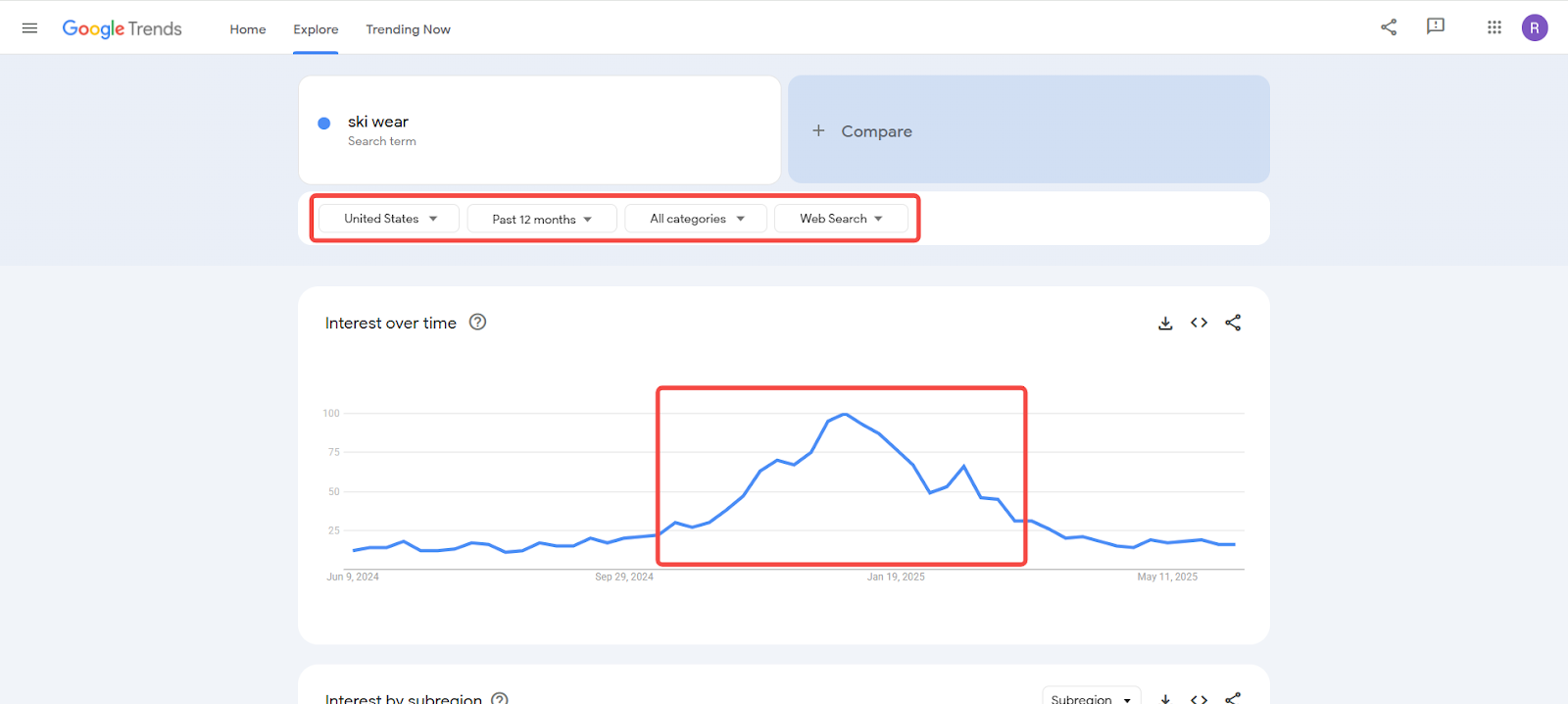
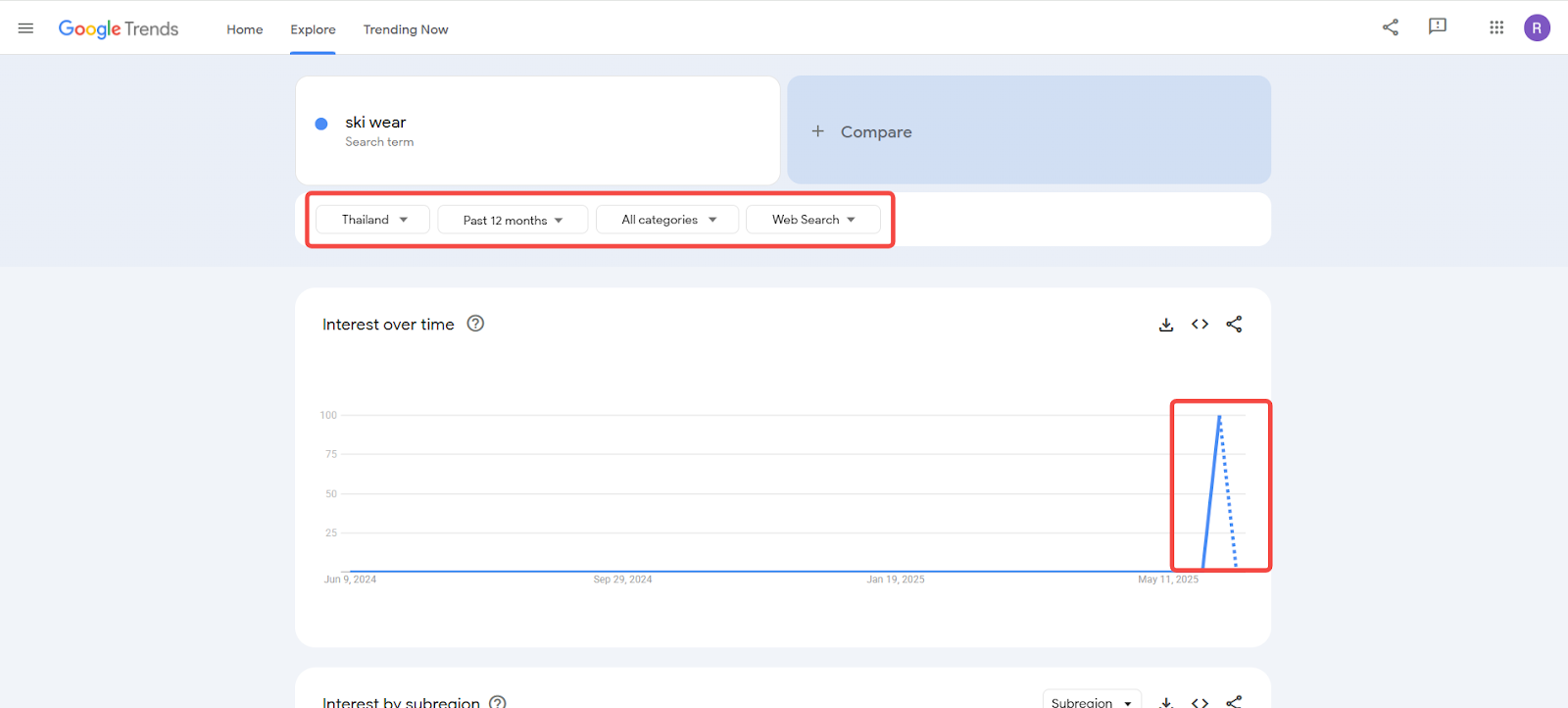
Example 2: Comparing UV protection shirt and skin clothes, the former dominates in North America where consumers value sun safety. Use keywords like UPF protection and outdoor performance in these markets. In other regions, highlight comfort-related features such as breathable or quick-dry.
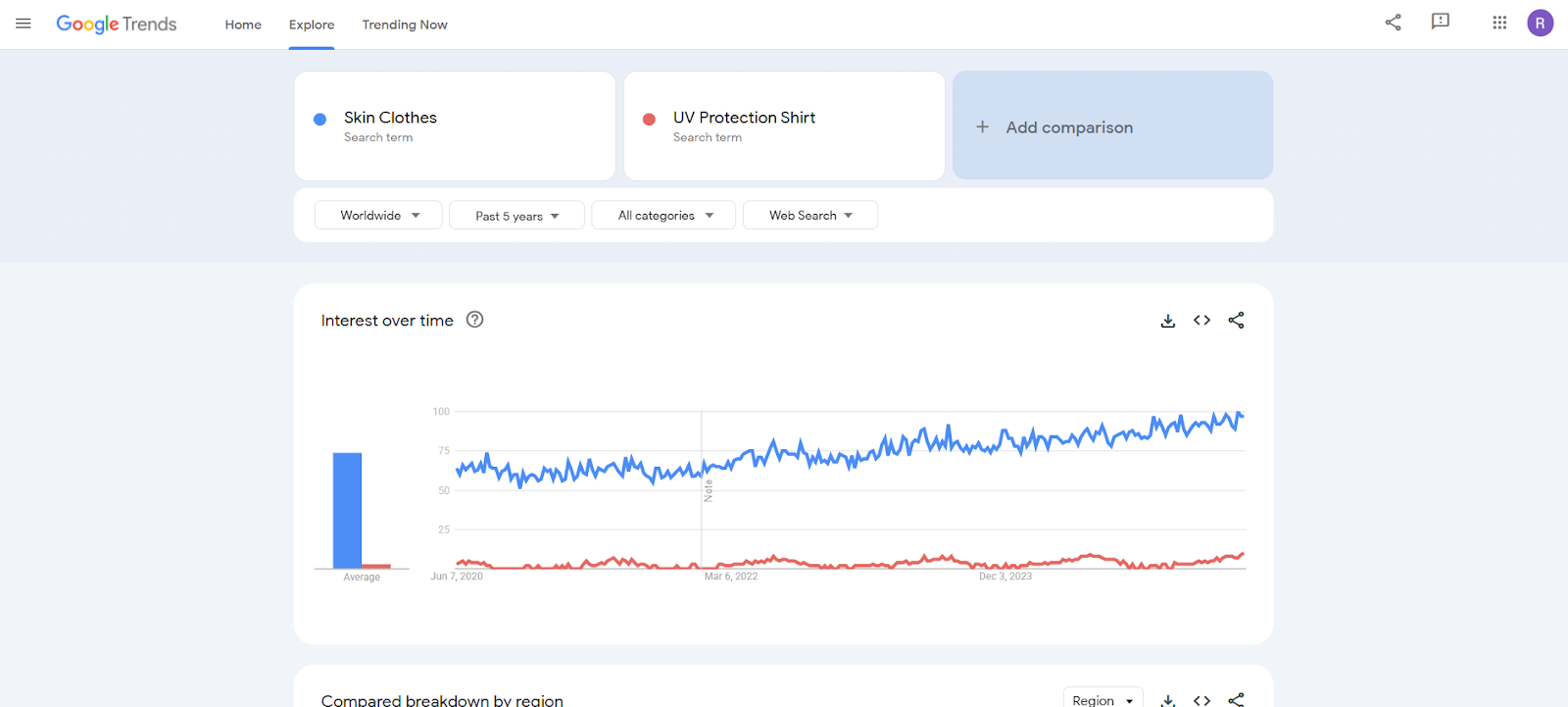

Example 3: In Hong Kong, search interest for down jacket spikes in mid-December, aligning with local winter. This indicates strong seasonal demand.

Note
Google Trends is designed for analyzing relative search trends, not providing exact search volume. For example, a keyword with a score of 50 may represent 1,000 searches, while another keyword with the same score may reflect 5,000. These numbers are relative within the selected timeframe and region.
Explore related topics and rising queries
Google Trends also highlights related topics and rising queries to help you:
- Discover emerging product variations.
- Spot long-tail keyword trends.
- Understand buyer intent.
Use this to:
- Refine your product listings.
- Discover niche categories.
- Align with how customers are searching.
Example: Search data for down jacket in the US shows a December peak, with Alaska as the top-performing state. Related queries often include specific features like lightweight, packable, or waterproof.
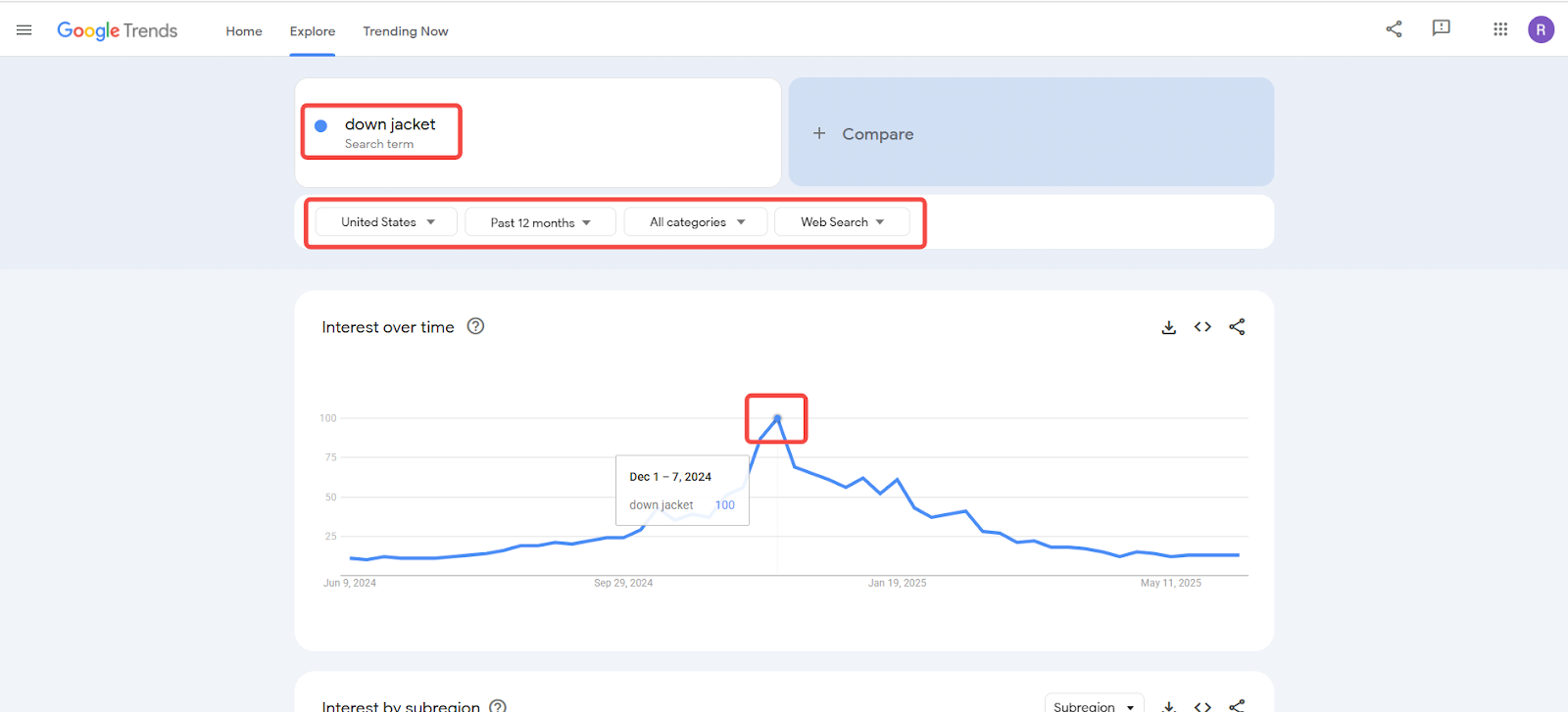
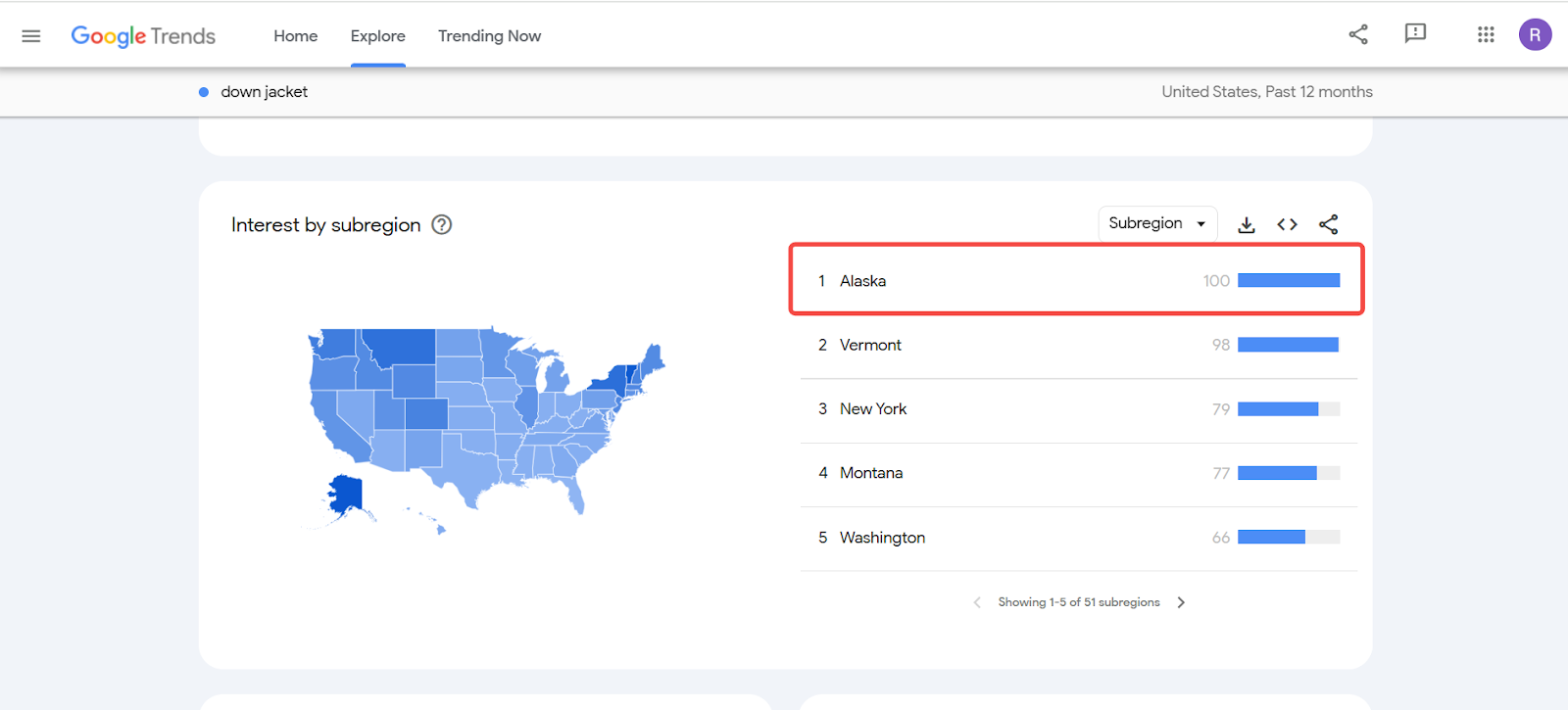

Search type suggestions
Use this to select the right search source depending on product type:
- Seasonal products: Use longer timeframes to identify yearly demand cycles.
- Fast-moving items: Use shorter timeframes to detect quick trend shifts.
- Web Search: Best for general interest.
- Shopping Search: Ideal for product selection and e-commerce.
- YouTube Search: Useful for content planning and influencer marketing.
Step-by-Step: Use Google Trends to validate product ideas
Step 1: Check long-term demand
Search for your product keyword (e.g., air fryer):
- Set time range to 5 years.
- Look for stable growth or predictable seasonal spikes.

Step 2: Compare against alternatives
Use the Compare feature to test related terms such as air fryer and oven:
- See which term shows stronger demand.
- Check region-by-region differences.

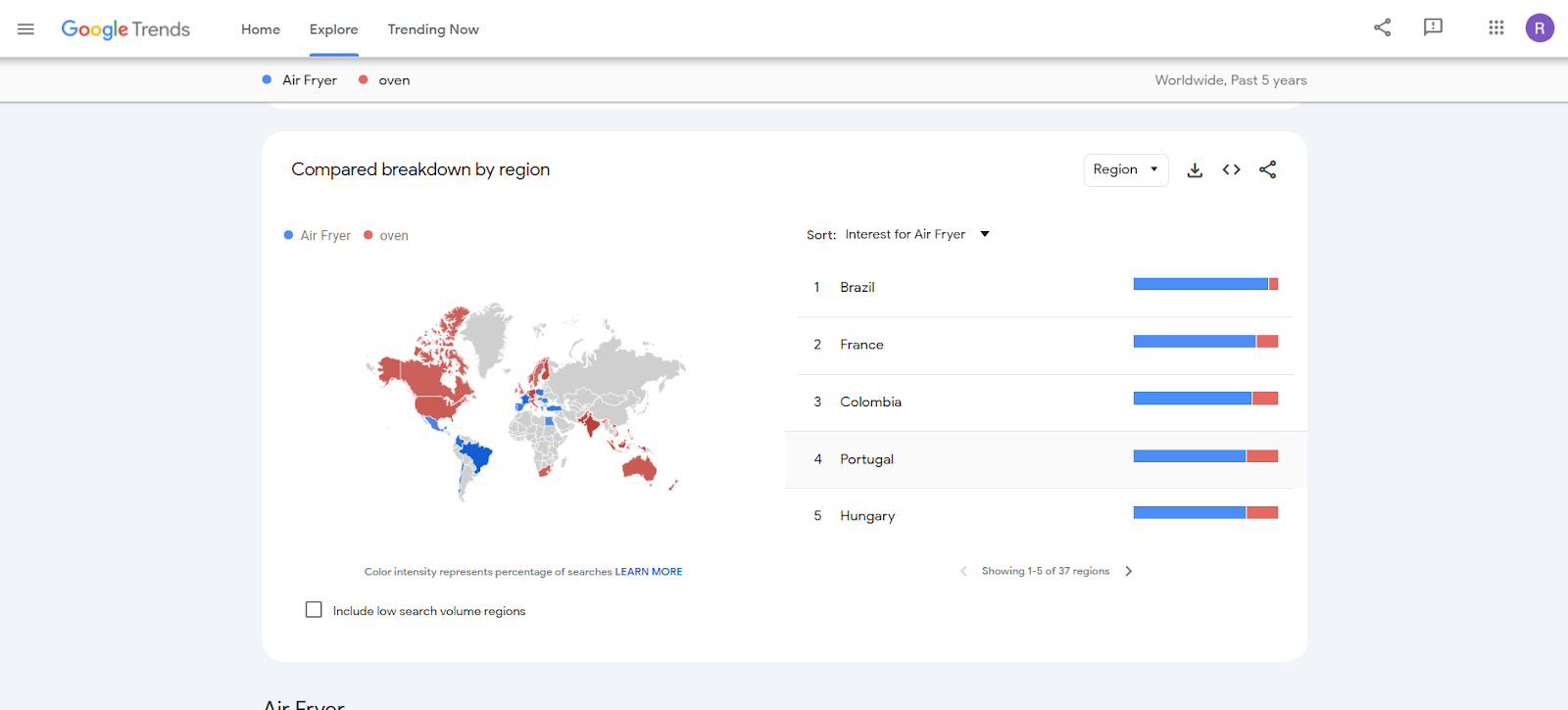
Step 3: Look for breakout queries
Scroll to Related queries:
- Filter by Rising to find fast-growing search terms (e.g., “ninja air fryer dual”).
- These are signals for emerging niches or brand-led demand.

Step 4: Identify high-interest regions
Switch to Interest by Region:
- Focus on markets with scores of 50 or higher.
- Prioritize those regions for your next campaign or product launch.
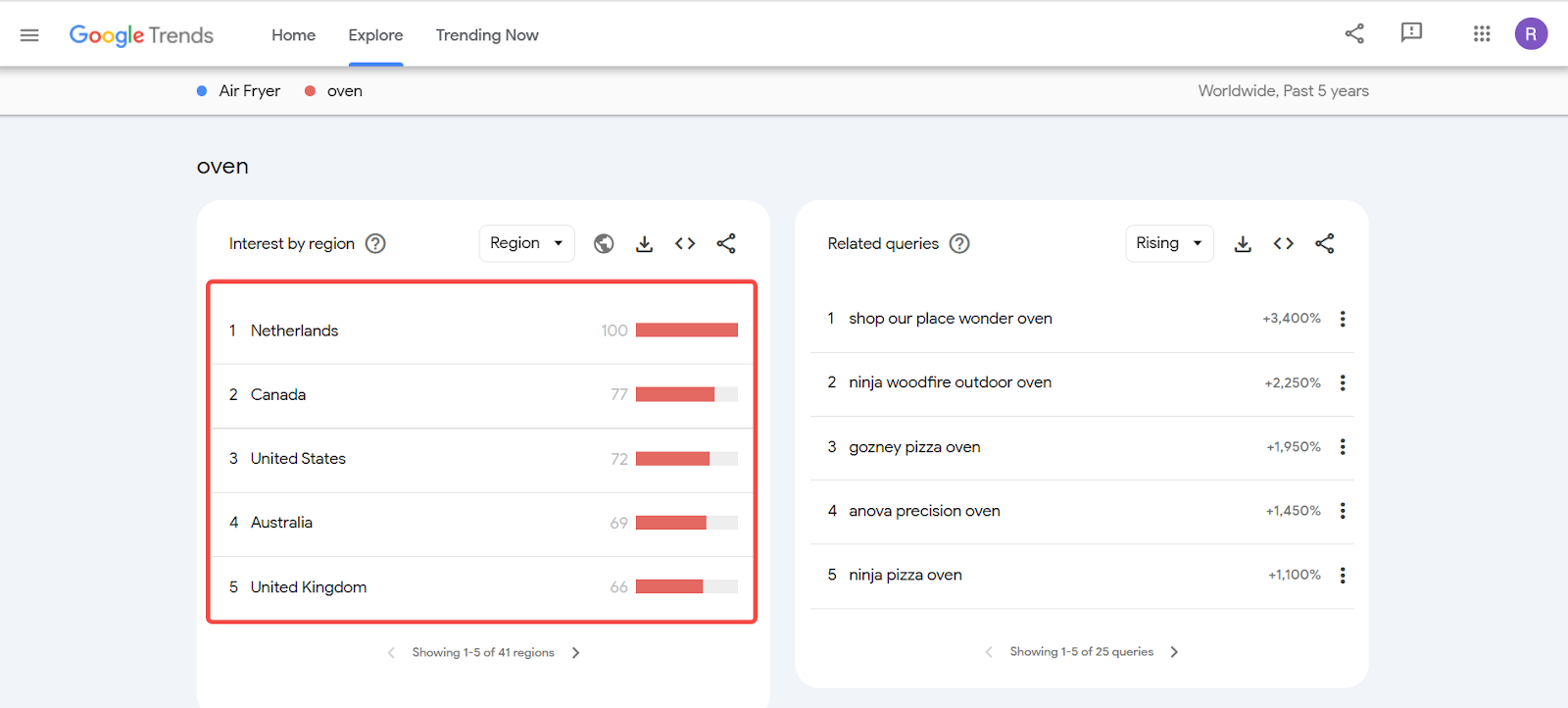
Important notes on Google Trends data
- Data is delayed by 1–2 days.
- Trends reflect relative search interest, not total volume.
- Data is limited to Google searches only. It does not include platforms like Amazon, TikTok, or offline behaviors.
- Sampling may limit niche keywords especially in low-volume regions or languages.
Case Studies: Applying Google Trends to product strategy
Case 1: Electric Scooters
- Overall search interest dropped 30 percent in the past 2 years.
- Searches for "foldable electric scooter" rose 50 percent.
- Germany shows strong demand. Consider focusing on high-spec upgrades in that market.
Case 2: Plant-Based Ice Cream
- 320 percent increase over the last 5 years.
- Sugar-free plant-based ice cream is trending. This reflects niche demand around health.
- Southeast Asia outpaces North America in interest.
- Seasonality matters. Plan inventory for summer peaks.
Case 3: MagSafe Accessories
- General interest has plateaued.
- Niche terms like MagSafe car mount are rising.
- Japan and Germany lag behind the US in adoption. Explore these regions as lower-competition markets.
Google Trends is more than a search tool, it’s a strategic advantage. Use it to validate product timing, test positioning, and discover where demand is emerging. The more you align with how and where people are searching, the more likely your product will succeed.



Comments
Please sign in to leave a comment.